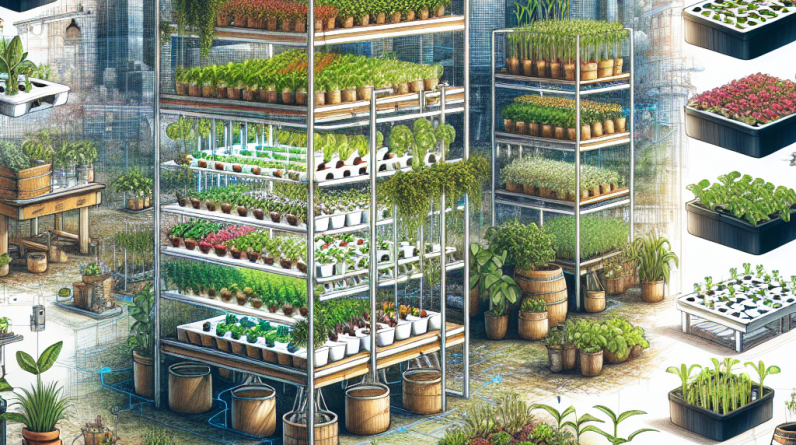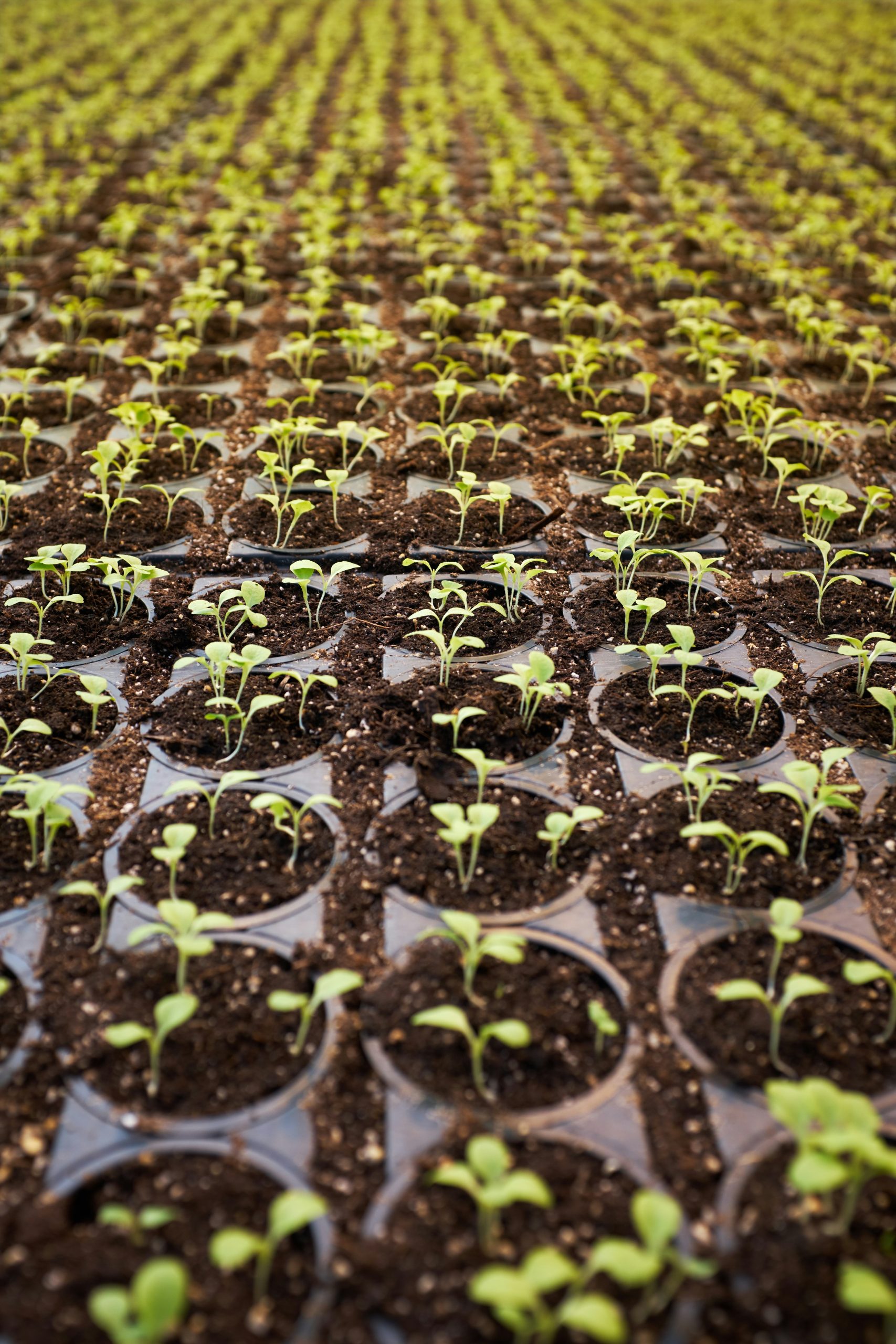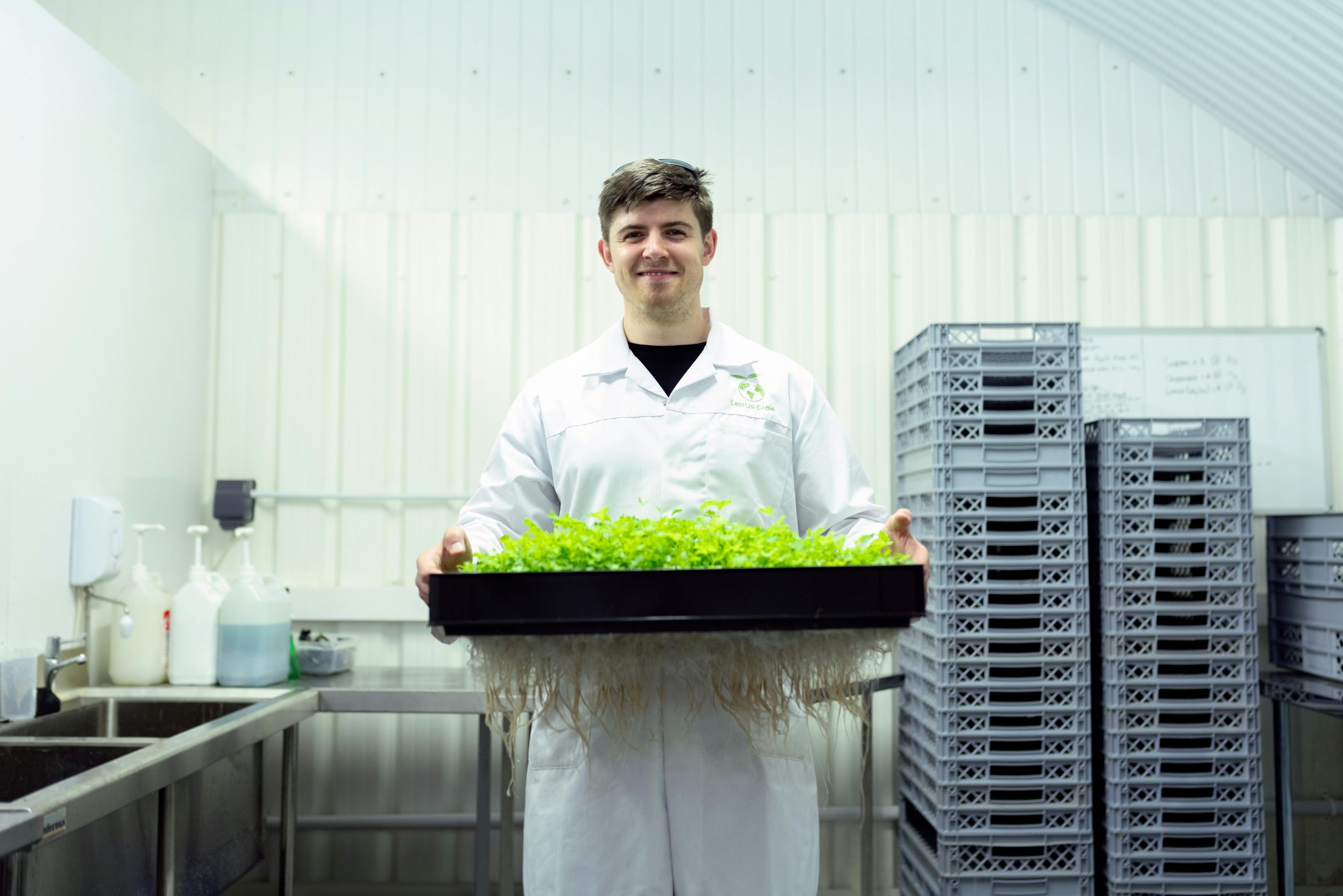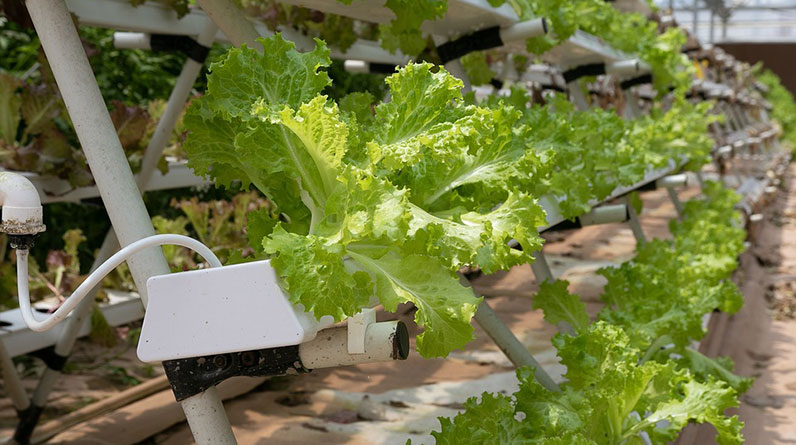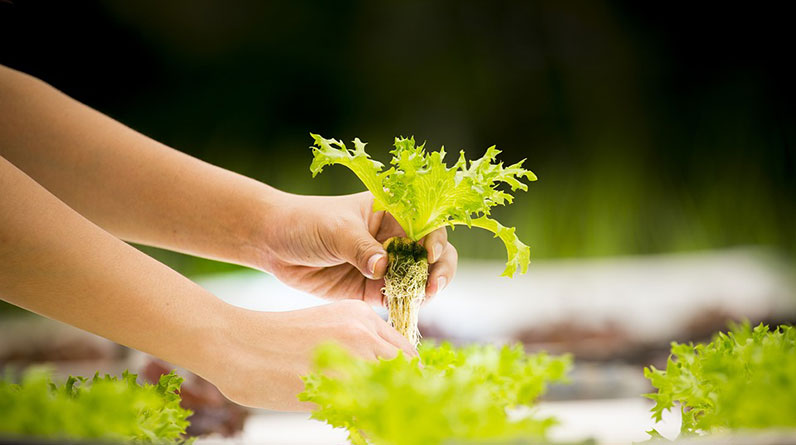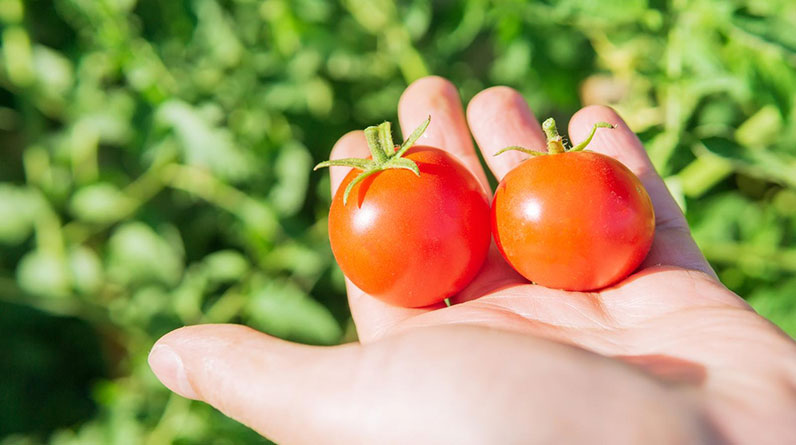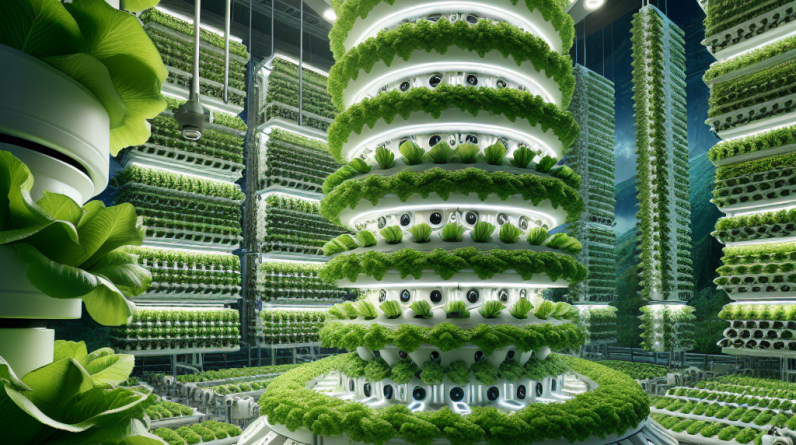
Table of Contents
- 1. Innovative Hydroponic Lettuce Tower Models of 2025
- 2. Advanced Hydroponic Technology Trends for 2025
- 3. Eco-Friendly Hydroponic Setup Options
- 4. Compact Hydroponic Tower Systems for Small Spaces
- 5. Automation Innovations in Hydroponic Cultivation
1. Innovative Hydroponic Lettuce Tower Models of 2025
Enhanced Modular Designs
The year 2025 brings a revolution in hydroponic lettuce towers with highly modular designs. These systems allow growers to customize and expand their setups easily. Modular towers mean that you can start small and scale as your needs grow, making them ideal for both urban farmers and large-scale operations.
Modern modules are made from sustainable materials, offering durability and eco-friendliness. They also feature ergonomic layouts that make maintenance easier, reducing labor time and increasing productivity. With innovations like stackable units, you can optimize limited space while maximizing yield.
For example, some models now incorporate sectional compartments that are removable for cleaning or system upgrades. This flexibility ensures your system remains functional and efficient for years to come, keeping you ahead in the competitive market of 2025.
Smart Monitoring and Control Features
Leading hydroponic lettuce tower models in 2025 integrate smart technology, allowing growers to monitor conditions remotely. Sensors track water pH, nutrient levels, temperature, and humidity, providing real-time data via mobile apps or web dashboards.
This technological integration empowers you to make data-driven decisions, adjust nutrient formulas, or troubleshoot issues from anywhere. Automated alerts notify you of any irregularities, preventing crop losses and ensuring optimal growth at all times.
Leveraging IoT (Internet of Things) technology means these systems can also sync with other smart home or farm automation devices, creating seamless operations. It’s a game-changer for efficiency and precision in hydroponic lettuce production.
2. Advanced Hydroponic Technology Trends for 2025
LED Lighting Innovations
One of the standout features of 2025 hydroponic lettuce towers is the integration of full-spectrum LED grow lights. These lights mimic natural sunlight and optimize photosynthesis, leading to faster growth rates and higher yields.
Newer LED systems are energy-efficient and can be tuned to specific wavelengths best suited for lettuce growth stages. Some models even offer adjustable height to accommodate plant size changes, ensuring uniform light distribution.
By adopting these LED advancements, growers can cut electricity bills by up to 30% while achieving superior crop qualityâa critical factor in the competitive 2025 market.
Environmentally Sustainable Nutrient Delivery
In 2025, the focus on sustainability extends to nutrient delivery systems. Automated nutrient dosing ensures precise application, reducing waste and environmental impact. Some systems incorporate recirculating reservoirs with filtration, minimizing water usage and pollution.
This eco-friendly approach not only conserves resources but also maintains optimal nutrient levels for healthy lettuce production. As a result, farmers can meet increasing regulatory standards and consumer demand for sustainable produce.
Research shows that efficient nutrient management improves crop consistency and flavor, making hydroponic lettuce towers even more appealing in the marketplace.
3. Eco-Friendly Hydroponic Setup Options
Sustainable Materials and Components
For environmentally conscious growers in 2025, choosing sustainable materials for hydroponic lettuce towers is essential. Recycled plastics, biodegradable components, and non-toxic paints are increasingly common options that reduce your carbon footprint.
Many manufacturers now design towers with recycled aluminum or bioplastics, which are both durable and eco-friendly. These choices extend the lifespan of the systems and lessen waste over time.
Implementing eco-friendly setups demonstrates a commitment to sustainability, appealing to eco-minded consumers and aligning with global efforts to reduce plastic pollution and conserve resources.
Solar-powered Systems
Solar-powered hydroponic lettuce towers are gaining popularity in 2025 as renewable energy becomes more accessible. These systems utilize solar panels to power grow lights, pumps, and sensors, significantly decreasing energy costs.
Integrating solar technology results in a nearly off-grid operation, ideal for remote areas or sustainable urban farms. The independence from traditional power sources reduces environmental impact and enhances resilience.
Not only does this promote green energy use, but it also offers long-term cost savings that make your hydroponic lettuce tower operation more profitable and environmentally friendly.
4. Compact Hydroponic Tower Systems for Small Spaces
Vertical Space Optimization
In 2025, compact hydroponic lettuce towers are designed to maximize vertical space, making indoor gardening feasible in apartments or small storefronts. Vertical stacking allows growers to produce large quantities of lettuce with minimal footprint.
Sometimes called “skyscraper” systems, these towers use tiered planting trays and efficient water recycling to save space. They are perfect for urban farmers looking to integrate fresh produce into limited environments.
Design innovations also include foldable or collapsible models, providing flexibility during non-growing seasons or when space needs change.
Cost-effective Solutions for Beginners
For those new to hydroponics, starting with a compact lettuce tower system can be a low-cost investment that yields high returns. Many starter kits come pre-assembled and come with detailed instructions to simplify setup.
Choosing a user-friendly model with automated controls can help beginners learn the basics of hydroponic farming without feeling overwhelmed. These systems often include LED lighting, nutrient reservoirs, and simple monitoring tools.
In 2025, these beginner-friendly systems make hydroponic lettuce cultivation accessible and less intimidating, encouraging more people to grow their own healthy food at home.
5. Automation Innovations in Hydroponic Cultivation
Auto-Nutrient Mixing and Delivery
Automation is at the forefront of hydroponic lettuce tower systems in 2025. Auto-mixing nutrient solutions ensures precise and consistent delivery, reducing human error and boosting crop health.
Modern systems adjust nutrient concentrations based on real-time data, maintaining ideal growing conditions 24/7. This automation results in healthier plants and faster growth cycles.
Such features free up time for growers, allowing them to focus on plant health and system maintenance while relying on technology to handle routine tasks effectively.
Integrated Pest Management (IPM) with AI
Artificial intelligence-driven IPM solutions are transforming disease and pest control in hydroponic lettuce towers. Cameras and sensors monitor plant health continuously and detect early signs of issues.
AI algorithms analyze data and recommend or automatically initiate preventive actions, such as adjusting humidity or deploying biological controls. This creates an environment resistant to pests and diseases without chemical interventions.
Adopting AI and automation improves crop security and reduces the reliance on pesticides, aligning with 2025’s focus on sustainable and clean produce production.
Frequently Asked Questions
1. What is a hydroponic lettuce tower?
A hydroponic lettuce tower is a vertical gardening system that allows growing lettuce without soil. Using nutrient-rich water and space-efficient design, these towers enable high-yield cultivation in small or indoor spaces. They are ideal for urban farmers and home growers aiming for fresh, local produce.
2. How do I maintain a hydroponic lettuce tower?
Maintenance includes regularly checking water pH and nutrient levels, cleaning the system to prevent algae buildup, and monitoring plant health. Automated systems in 2025 make this process easier with sensors and alerts. Consistent care ensures healthy lettuce growth and maximizes yield.
3. Are hydroponic lettuce towers environmentally friendly?
Yes, especially when designed with eco-friendly materials and sustainable energy sources like solar power. They use less water compared to traditional farming and reduce the need for chemical pesticides, making them a greener choice for urban and indoor agriculture.
4. What are the benefits of using a hydroponic lettuce tower system?
Benefits include higher yields in less space, faster growth cycles, less water usage, reduced pest issues, and the ability to grow fresh lettuce year-round regardless of outdoor weather. They also provide a controlled environment for producing high-quality, nutritious greens.
Conclusion
In 2025, the evolution of the hydroponic lettuce tower system offers unparalleled opportunities for efficient, sustainable, and high-yield indoor farming. Whether youâre a hobbyist or a commercial grower, selecting the right hydroponic lettuce tower is crucial for success. By understanding the latest models, technology trends, and eco-friendly options, you can make informed decisions that will elevate your hydroponic farming experience. The future is bright for hydroponic lettuce towers, and embracing this innovative approach will lead to healthier crops, greater productivity, and a more sustainable food system. So, invest wisely in your 2025 hydroponic lettuce tower system and enjoy the benefits of modern agricultural technology.



